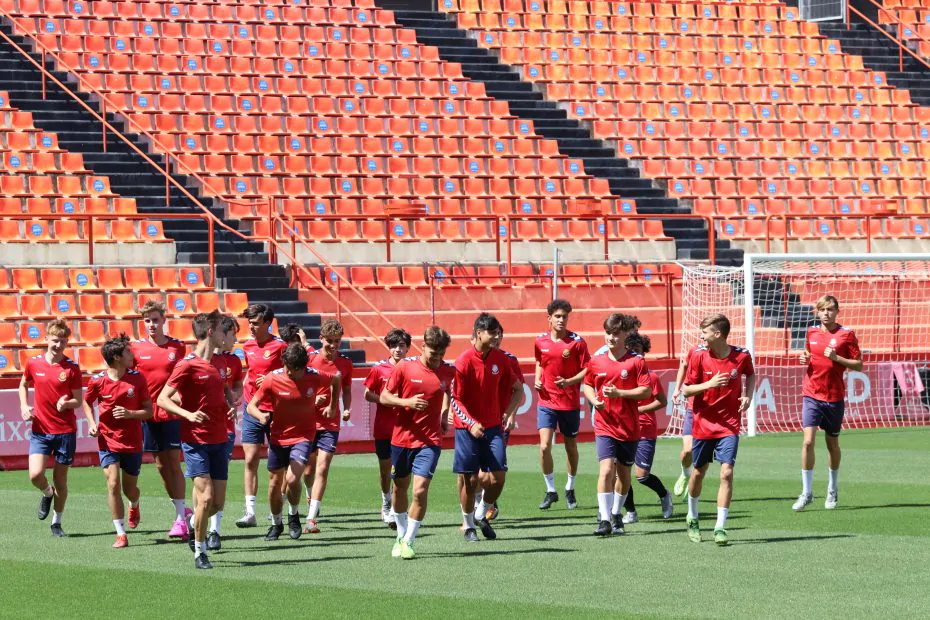An introduction to soccer tactics
Soccer is an emotion-packed sport that’s full of spirit and strategy. However, you may not realize just how much tactical preparation goes into it, all in the name of overcoming the opponents.
We’re going to take an in-depth look at all the different soccer techniques as well as telling you exactly what you need to know about them; we’ll tell you all you need to know about soccer playing systems, as well as attacking and defensive strategies. Take note and your football knowledge and skills are bound to improve!
Soccer tactics: What exactly are they?
Soccer tactics, often referred to as “tactical soccer,” are the strategies and systems that teams employ to structure their play on the pitch and to achieve their objectives. In modern soccer, these tactics have evolved significantly and are now considered to be intricately linked to a team’s success. Being able to adapt and effectively execute these tactics is crucial for teams who want to excel in the competitive world of professional soccer.
Here’s all you need to know about soccer playing systems in general:
Football Tactics: Defensive Strategies
When a team finds itself with limited attacking resources, it often opts for an effective defensive strategy. This strategy is usually adopted by teams considered to be inferior to their opponents. They’ll choose to build their playing style around a solid defense which can then transition into attack. We’ll now bring you some common defensive techniques from the world of football.
A back-four vs a back-five
One of the most basic defensive soccer formations is a back four. This strategy uses two central players in front of the goalkeeper and two wing-backs on either side. The wing-backs don’t venture too far up the field, as their job is to keep the opposing team’s wingers at bay and prevent them from creating chances.
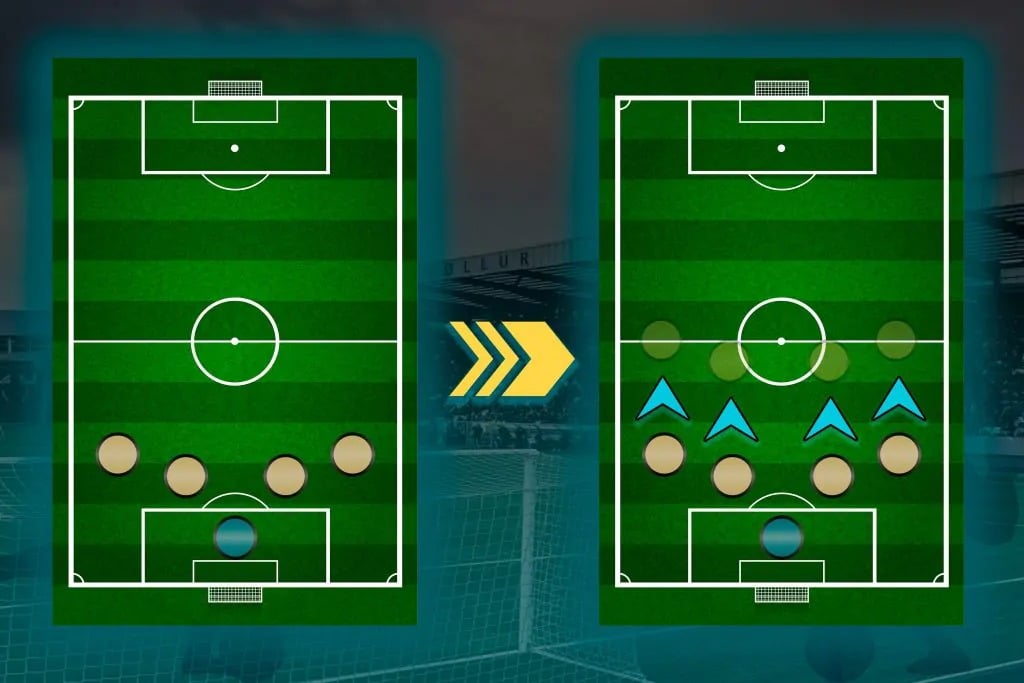
A back-five is a bit more devious. Even though there are 5 players deployed in defense, the two wing-backs can move up the field and even get into quite attacking positions. The three central defenders don’t usually advance too much and are responsible for averting any threats from the opposing team.
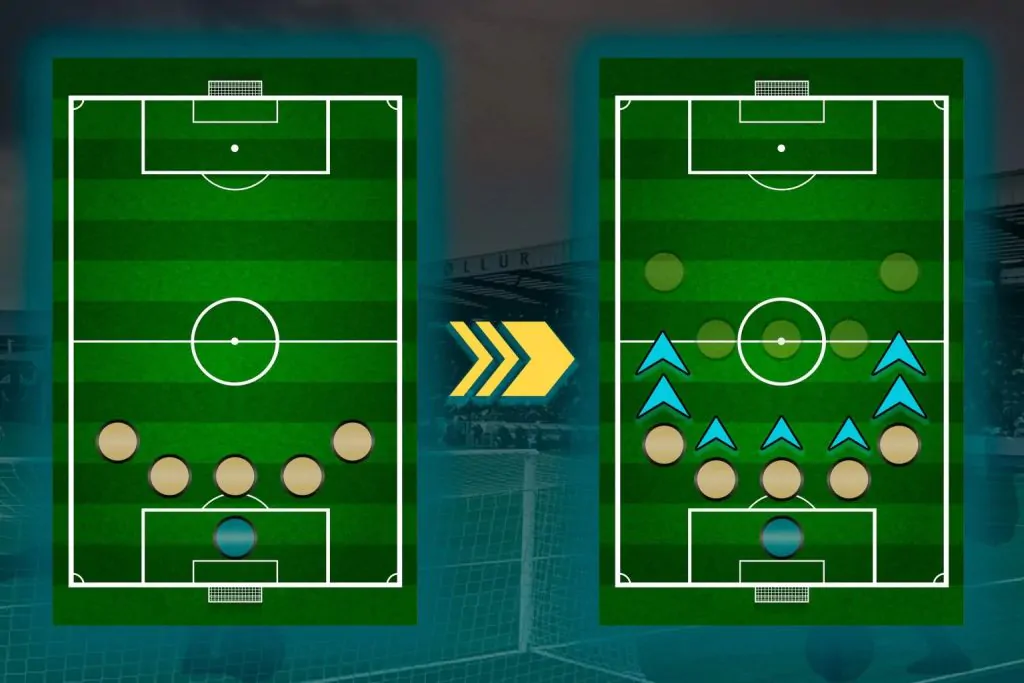
High press vs. low press
In soccer, some teams use a defensive strategy with a high press, which means that all the players will move into more advanced positions, trying to break up the opponent’s play and mount a quick counterattack.
When a team shows a high level of respect for its opponent, it often opts for the low press. This means they’ll allow the opposition to keep control of the ball in less dangerous areas. However, once the ball crosses the halfway line, the defense will advance and start to press.
Man-to-man marking against zonal marking
When one team tends to dominate the possession, the defending team will choose to employ man-to-man marking. This means the opposing team will have little time to think, as the moment they get the ball there’ll already be a defender on top of them.
Zonal marking is where defenders protect a specific area of the field in each move. In this way, it will be difficult for the opponent to find space to create attacks.
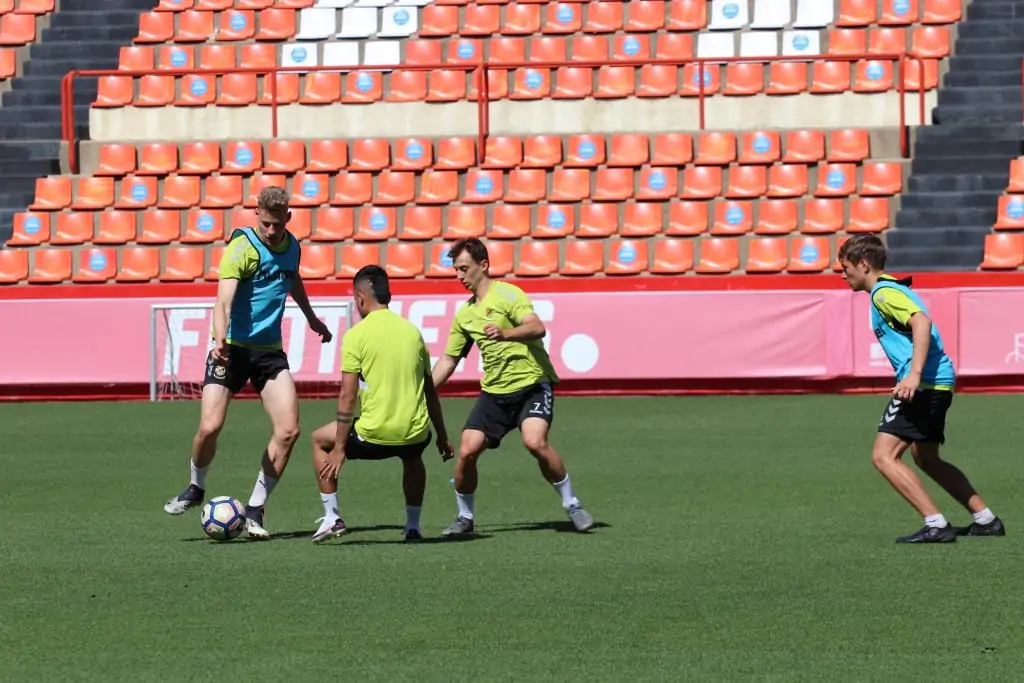
Playing out from the back
In the case of playing out from the back, the players pass the ball around patiently among themselves. This tactical soccer strategy allows them to control the pace of the game, control possession, and intimidate their opponents in their own half.
Playing a defensive high line, forcing offside
Some attacking teams seek to thread balls through the defense, and the best way to prevent this type of attack is with a high defensive line that forces the attackers to stay in attacking positions.
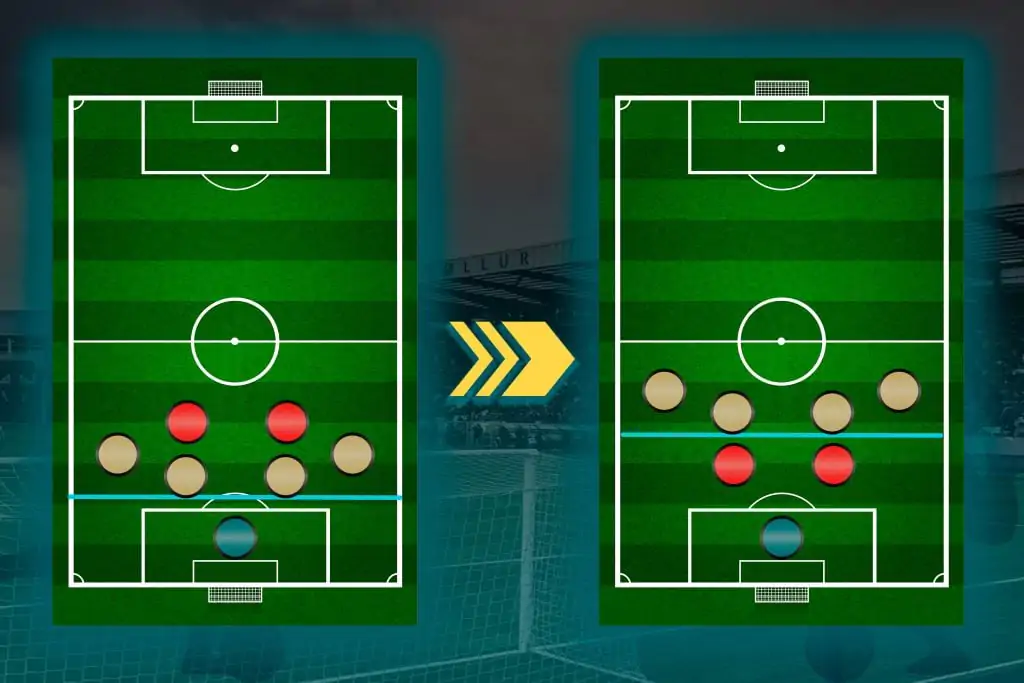
Defensive shifting
Defensive shifting in soccer is one of the sport’s most innovative strategies. In our modern-day tactical soccer, it’s very common for defenders to apply shifting to hinder opponent’s attacks.
This tactic consists of compact movements among defenders, with the team defending based on where the ball is located. For example, with a left-wing attack, the defense will shift to defend more on that side than on the right.
Soccer tactics: attacking strategies
Clearly you can’t win soccer games if you don’t score goals, and so you need to be familiar with the best attacking strategies a team can apply to be successful:
Direct play vs possession play
Some soccer teams stand out for having a more direct game, which means that they play with fewer touches and more precise passes to the forwards. It’s a highly effective soccer tactic for teams that have very skillful ball players.
Possession play is another common soccer strategy; with this approach, the players wait patiently until they find the right opportunity to attack. It’s a very useful strategy when a team has high-quality playmakers.
Attacking on the flanks or through the center?
When a team has dribblers who can beat any defender in a 1-on-1 situation, a good strategy is to attack down the flanks. After beating the defenders, they just need to provide a good cross or shot into the box.
When a team dominates the possession, they look to open up space between the defenders, and usually opt to create chances by attacking through the middle, and with few touches. This can free a striker up to get a shot on goal.
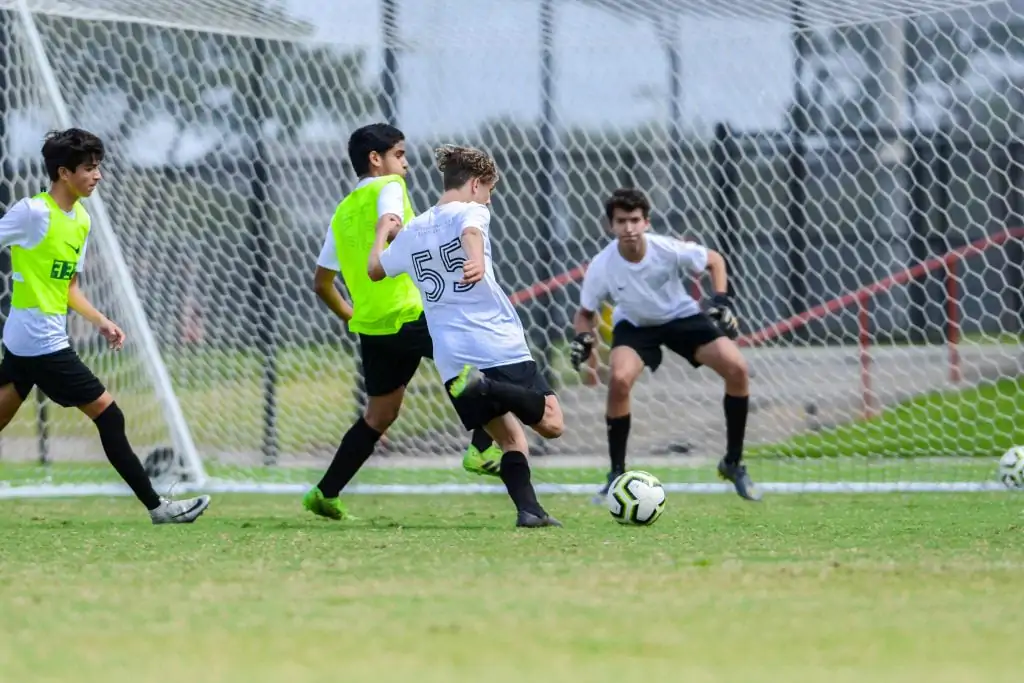
Playmakers and attacking midfielders
The midfield is the most important area as far as tactical soccer is concerned, and whoever controls it will control the tempo of the game. Midfielders are crucial players in a team’s game plan, and they usually have a “number 5” who is in charge of controlling the team’s midfield, both in defense and in attack.
Another important role is that of playmaker, and they’ll be in charge of creating an attacking threat, and even providing assists with direct passes to the strikers. Another important player is the “attacking midfielder”, who spends less time in defense and is more likely to get into the penalty area with their ball skills.
The importance of a “false 9” in football tactics
Traditionally, a “number 9” in football has always been a striker who struck fear into defenders because of their strong physical play and presence. Currently, our more tactics-based soccer means that it’s much more common to find the so-called “False Nine”, a “slippery”, rather elusive striker who doesn’t have such a physical presence, but who can quickly create space in the box with quick simple touches.
A good “False Nine” could be an important asset when trying to break down a team that’s defensively-strong both in the air and on the ground
Beating the offside trap, balls through the middle
When the defending team presses high and intimidates their opponents, creating a quick attack with a through ball to beat the offside trap is an effective attacking strategy. A fast striker who can outrun defenders can create the necessary space to make a diagonal run, breaking the offside trap, and getting a one-on-one with the keeper.
Transitions: From attack to defense and vice versa
Transitions are a crucial part of modern-day soccer tactics in both attacking and defensive strategies. They can be highly effective in helping a team to score or even save goals. Here’s some more about them:

Quick counter-attacks
Following a corner kick or a threatening attack, if the opposing team gains possession of the ball, then a quick counterattack can easily lead to a goal. This involves mounting an attack starting with the defenders, who’ll get the ball to a striker via an attacking midfielder or a winger and then it’s a race to score!
Defensive retreat and reorganization
When a counterattack is launched by the opposing team, the defending team must pull back its defenders at high speed. The aim is always to outpace the opponent and to cut off the attack with an effective defensive reorganization.
Even if a particular defender can’t get back in time, another outfield player may be able to cover for them until the end of the move. You can learn all about this defensive strategy in our summer camps.
Changes of tempo
Changes of tempo at any given point in a match can be extremely effective. Quick-thinking players can make a real difference, as they can change the momentum of the match with just a couple of simple touches, and create a scoring chance in a matter of seconds.
This change of tempo can surprise the defense and leave it helpless against a quick attack with precise passes to feet and a chance to score.
Tactics during set pieces
In tactical soccer, set pieces are key moments in a game and can be used to a team’s advantage. They require precise planning and execution in order to obtain maximum impact. We’ll now take a look at some of the most effective approaches.
Corners
At corner kicks, teams commonly seek out their tallest players to head the ball goalwards. The physical nature of this set piece is key, and only the strongest and most skillful players will be able to find space in a packed defense.
Some teams try to surprise the defenders by taking a short corner with the aim of finding more space to cross the ball into the box or even shoot.
Direct and indirect free kicks
With direct free kicks, a skillful player has the chance to score directly past the keeper. He can also surprise the defenders in the wall by chipping a cross into the box or threading a through ball to an unmarked player.
Indirect free kicks are often further away from goal, and teams will try to get a good cross into the box and create a scoring chance. Alternatively, they may choose to simply string a few passes together and look to create some danger via another route.
Penalties: Strategies and psychology
Many players consider penalties, and particularly penalty shootouts, to be a bit of a lottery. A lot of tension surrounds this particular type of set piece, and even though it may seem an easy task to score, it often certainly isn’t and goalkeepers will always do their best to put the player off and make a great save.
When considering penalty soccer techniques, many players usually opt for a powerful strike to leave the goalkeeper without a hope. Others go for a softer more controlled shot and try to place it out of the keeper’s reach. Some particularly confident and skillful players may try a “Panenka”, a technique in which the player chips the ball softly right down the middle of the goal, thus fooling the goalkeeper who will probably have already dived.
A goalkeeper’s job is to analyze the opponent’s penalty takers and try to guess which way they’re going to shoot. Many goalkeepers use psychological tactics to try to get into the player’s mind and distract them.
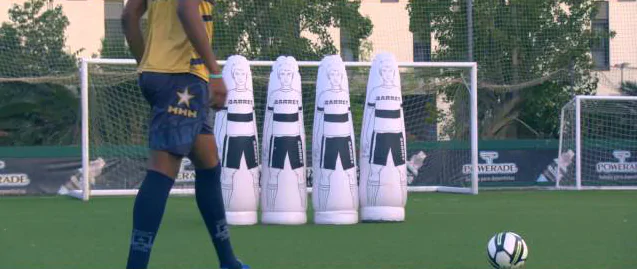
Modifying tactics according to the opponent
Changing your tactics to adapt to your opponent is essential in the world of football. This involves combining game strategies, such as high pressing or counterattacking, with technical soccer skills such as dribbling and passing, to try to outwit the opponent. Here are some strategies that can be used to good effect:
Analyzing the opponent: strengths and weaknesses
Setting up your team’s playing style based on the opponent’s strengths and weaknesses is always the intelligent thing to do. For example, if the other team has problems dealing with balls in the air, then you should try to cross the ball into the box as much as possible. And if the other team’s defense usually plays quite far forward, then quick moves with through balls trying to beat the offside trap would be a great option.
A change of tactics in the middle of the match
If the team’s approach doesn’t work at the start of the game, the coach may make a number of changes to try out new tactics with the aim of disrupting the opponent’s defense or attack.
Soccer tactics: Basic principles
The definition of soccer tactics
In essence, soccer tactics are a combination of movements or actions implemented during a match with the aim of achieving the objectives laid down in the pre-match strategy. Tactics are crucial when it comes to winning soccer matches.

The difference between tactics and strategies
The difference between tactics and strategy is simple. The match strategy is what the coach outlines before the start of the match, with specific objectives that the team seeks to fulfill during the match.
Tactics, on the other hand, are the actions that the players must implement in order to achieve the objectives of the strategy. For example; if the team’s strategy is to surprise the opponent’s advanced defensive line, then the tactics would be to make quick through balls to breach the gaps.
How to learn about the best football tactics
If you’d like to learn all about the best and most innovative soccer techniques, then our High-Performance Academies are an absolute must – you’ll find them on our website, so check them out! Alternatively, you could try to get your football career up and running by signing up for a trial to try to get a team or academy to sign you up.
Conclusion
Future trends in soccer tactics
If we compare traditional soccer with our modern-day tactical soccer, then we’ll clearly see how tactics have become one of the biggest innovations in the sport. There’s no doubt that football techniques are continually evolving, and more and more technological innovations are emerging that analyze statistics and different teams’ styles of play.
This information is used to create new tactics and strategies and get a better insight into the game.
The importance of adaptability and constant research in tactical soccer
It’s crucial to be able to adapt to new situations in tactical soccer, as teams have to continually evolve, learning about new developments in the sport. This information can challenge current interpretations of soccer and result in new tactics being developed in the future.
The importance of this research can make all the difference when analyzing the game and creating strategies.
We want to answer your soccer questions!
Some examples of specific tactics
Tactical soccer is all about the planned strategies that a team employs to achieve its objectives on the pitch. This includes how players organize themselves to defend, attack and control the game. One famous example of a specific type of tactics is Barcelona’s “tiki-taka,” which relied on short passing and ball possession to wear down the opponent, and another is the “counter-attack,” where a team defends solidly and then looks for quick transitions to attack and surprise the opponent.
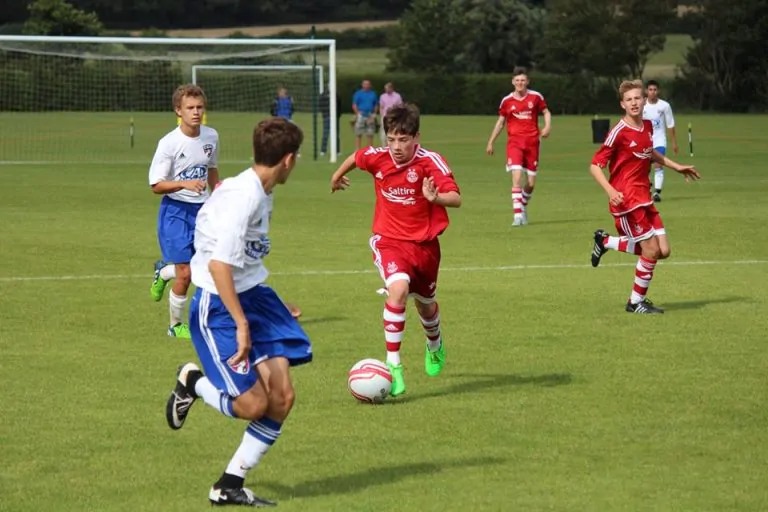
How many types of tactics exist and what are they?
In soccer we find a great many different types of attacking and defensive tactics. As regards attacking strategies we have direct play, possession play, attacking down the flanks, central attacking, the “false nine” and through balls.
Among the defensive tactics, we can apply the following: a back-four, back-five, high pressing, low pressing, man-to-man marking, zonal marking, playing out from the back, a high defense and defensive shifting.
What are attacking tactics?
Attacking tactics focus on advancing towards the opponent’s goal and scoring goals. Strategies such as quick counterattacks, positional play to create spaces, passing combinations, and off-the-ball movements are crucial. Penetration through the wings and crossing into the box are common tactics. Moreover, set-piece plays from corner kicks or free-kicks near the box are used to create goal-scoring opportunities. Creativity and coordination are essential to unsettle the opposing defense.
What is the most simple, basic team tactic?
The most basic simple defensive tactics are the back-four and the low press. The most common attacking ones are possession play and attacking down the flanks.
What’s a good tactic?
A good tactic is one that is successfully executed on the pitch. For example, if the opponent is weak down the flanks, an effective attacking tactic would be to focus the game in these areas and try to beat the defenders in 1-on-1 situations.

